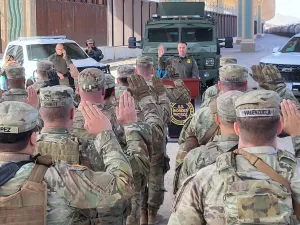The U.S. Capitol building, the worldwide symbol of American democracy, got its beginnings on a piece of paper on the Caribbean island of Tortola, sketched out by a temperamental doctor in his early 30s.
Source: Library of Congress
Posted By: Neely Tucker
This article also appears in the September-October issue of the Library of Congress Magazine.
William Thornton, born in what is now the British Virgin Islands and educated in England and Scotland, immigrated to the U.S. in 1787, became a citizen the next year but soon returned to his native island. In 1792, he belatedly learned of a competition to design the new country’s congressional home.
He worked “day and night” on the drawings and revised them heavily after he got to Philadelphia (then the capital city), and they immediately caught the eye of President George Washington and Secretary of State Thomas Jefferson. The neoclassical design had sections for the House and Senate on each end connected by a domed rotunda with an impressive portico. Washington loved its “grandeur, simplicity and convenience” and formally approved a further modified design, with a floor plan designed by Stephen Hallet, the only trained architect to have entered the competition, in July 1793.

The District of Columbia was a swampy backwater in the 1790s and what is now known as Capitol Hill was a wooded rise, filled with scrub oak. There was no building on the continent that looked remotely like their ambitions.
During construction — which has only seemed to pause during the past 200 years, as the building and grounds are constantly evolving — things changed. The Capitol expanded with the nation, growing from the original bid for a modest 15-room brick building into a complex covering 1.5 million square feet with more than 600 rooms and miles of hallways over a ground area of about 4 acres. The cast-iron dome weighs 8.9 million pounds. It is also a museum of American art and history, with gorgeous tile floors, delicate friezes and masterpieces of painting and statuary.
That construction was like many a Washington project — filled with competing political visions, never-finished ideas, delays, conflicts of interest, hirings, firings, rehirings, egos, a libel suit, cost overruns, disasters and, somehow, stunning success.
“It is America’s greatest building; it is in the monumental and classical tradition of Western art and is among the great symbols of Western civilization,” writes Arthur Ross of The Institute of Classical Architecture & Art in the 2005 foreword to “The United States Capitol: Its Architecture and Decoration.”
The Library preserves a significant chunk of that history, with personal papers, architectural renderings, plans and drawings. These include not only the papers of Washington and Jefferson, whose architectural ideals shaped the building’s concept, but also an archive of work by Benjamin Henry Latrobe, the second architect of the Capitol and responsible for much of its neoclassical design; an archive of Charles Bulfinch, Latrobe’s successor as architect of the Capitol; and an idea book of Constantino Brumidi, whose murals, friezes and frescoes, including the “The Apotheosis of Washington,” fill the building.

There are also the papers of Frederick Law Olmsted, the nation’s preeminent landscape architect of the 19th century who reshaped the Capitol’s wooded grounds into a marvel of beauty; and the papers of Montgomery C. Meigs, a prominent Civil War officer and engineer who oversaw key additions to the Capitol, including its stunning dome. (The Architect of the Capitol, as you might expect, also as vast history of the building.)
These collections are buttressed by foundational items such as the 1792 newspaper ad announcing the design competition that drew Thornton’s entry as well as Thornton’s original “Tortola Scheme”; Washington’s original letter to the commission endorsing it; Pierre L’Enfant’s original 1791 plan of Washington with the site of the Capitol Building; and the first photograph of the Capitol, taken in 1846.
These combine to tell an unlikely story, for there were few architects and craftsmen in the young nation, none of the original commissioners overseeing the project had qualifications for the work and there was little funding. Thornton and Latrobe, the first two architects of the Capitol, insulted one another so viciously that Latrobe successfully sued Thornton for libel.
“Few buildings have begun under less favorable circumstance, and fewer still enjoy greater architectural success,” writes William C. Allen in “History of the United States Capitol,” a 2001 government publication.

Principal construction dragged on for decades. The Capitol was burned by the British in 1814, and another fire in 1851 destroyed much of the Library of Congress (then housed in the Capitol). Dozens of workaday ovens were installed during the Civil War to help feed Union troops who were camped nearby. It was only that war that brought an end to using enslaved workers to build the “temple to democracy.”
One of those workers was Philip Reid, an enslaved man who in 1860 played a key role in casting the Statue of Freedom that crowns the dome. Then in his 40s, he was a free man by the time it was raised in 1863.

From the statue’s vantage point nearly 300 feet above the city, workers who put it in place would have seen the Anacostia and Potomac rivers slicing around L’Enfant’s planned city and the expanse of the country spreading beyond the western horizon.
So much of the nation’s history had yet to be written, and the building that would become its symbol was, like the rest of the nation, still growing.





